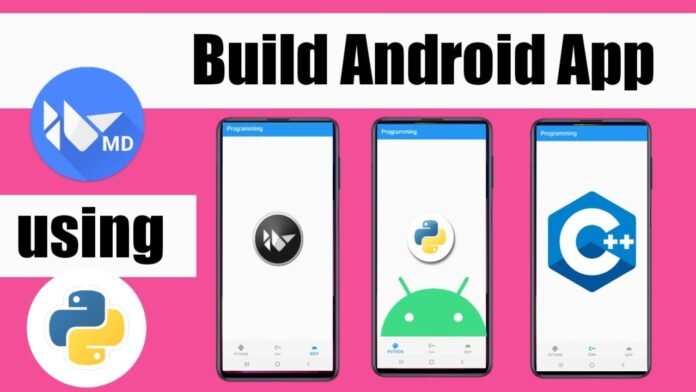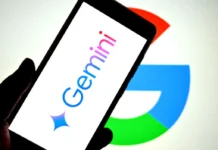How to Create an Android App from a Python Project & Publish as a Web App
In this guide, we’ll go through the complete procedure of:
- Converting a Python Project into an Android App
- Publishing a Python App as a Web Application
1. Convert a Python Project into an Android App
Python is not natively supported for Android development, but frameworks like Kivy, PySide, BeeWare, and PyQt make it possible.
Tools & Frameworks for Android App Development with Python
✅ Kivy – Best for cross-platform GUI apps
✅ BeeWare (Briefcase) – Best for native Android/iOS apps
✅ PySide/PyQt – Best for GUI apps with Qt
✅ Chaquopy – Run Python code inside an existing Android (Java/Kotlin) app
Method 1: Using Kivy & Buildozer (Most Popular)
Step 1: Install Dependencies
Ensure you have Python installed. Then install Kivy:
pip install kivy
pip install kivy[base] kivy_examples
Install Buildozer, which is used to package Python into an Android APK:
pip install buildozer
Ensure you have Cython, pyjnius, and virtualenv:
pip install Cython virtualenv pyjnius
Step 2: Create a Simple Kivy App
Create a Python file main.py:
from kivy.app import App
from kivy.uix.label import Label
class MyApp(App):
def build(self):
return Label(text="Hello, Android!")
if __name__ == "__main__":
MyApp().run()
Create a .kv file (optional) to design the UI.
Step 3: Initialize Buildozer
Run this command in your project directory:
buildozer init
This generates a buildozer.spec file, where you can configure your package name, requirements, and permissions.
Step 4: Build the APK
buildozer -v android debug
After a successful build, the APK file will be in the bin/ folder.
Step 5: Install APK on Android
Transfer the APK file to your Android device and install it.
Method 2: Using BeeWare (Briefcase)
BeeWare allows you to create native Android, iOS, and desktop apps from Python.
Step 1: Install BeeWare
pip install briefcase
Step 2: Create a New App
briefcase new
Follow the prompts to set up your project.
Step 3: Build the App
briefcase build android
Step 4: Run on Android Emulator
briefcase run android
This method provides a more native experience compared to Kivy.
Tools & Programming Languages Involved for Android App
| Tool | Purpose |
|---|---|
| Python | Main programming language |
| Kivy | GUI framework for Python apps |
| Buildozer | Converts Python to APK |
| BeeWare | Native app deployment |
| PySide/PyQt | GUI toolkit for applications |
| Chaquopy | Run Python in Android apps |
| Java/Kotlin | Required for integrating with Android |
2. Publish a Python App as a Web Application
If you want to run your Python project as a web app, you need a framework like Flask, Django, or FastAPI.
Tools & Frameworks for Web Deployment
✅ Flask – Lightweight for small projects
✅ Django – Full-featured web framework
✅ FastAPI – Best for APIs
✅ Streamlit – Best for data science apps
Method 1: Deploying a Flask App
Step 1: Install Flask
pip install flask
Step 2: Create a Simple Flask App
Create app.py:
from flask import Flask
app = Flask(__name__)
@app.route("/")
def home():
return "Hello, Web!"
if __name__ == "__main__":
app.run(debug=True)
Run the app locally:
python app.py
It will be accessible at http://127.0.0.1:5000/.
Step 3: Deploy to Heroku
- Install Heroku CLI:
pip install gunicorn - Create a
requirements.txt:pip freeze > requirements.txt - Create a
Procfile:web: gunicorn app:app - Deploy:
heroku create my-python-webapp git push heroku main heroku open
Method 2: Deploying with Django
Step 1: Install Django
pip install django
Step 2: Create a Django Project
django-admin startproject myproject
cd myproject
python manage.py runserver
Django runs at http://127.0.0.1:8000/.
Step 3: Deploy to AWS, DigitalOcean, or Heroku
Use Gunicorn and Nginx for production.
Method 3: Deploying with FastAPI
FastAPI is best for building APIs.
Step 1: Install FastAPI & Uvicorn
pip install fastapi uvicorn
Step 2: Create a FastAPI App
from fastapi import FastAPI
app = FastAPI()
@app.get("/")
def read_root():
return {"message": "Hello, Web!"}
Run the app:
uvicorn app:app --reload
Tools & Programming Languages for Web Deployment
| Tool | Purpose |
|---|---|
| Python | Main programming language |
| Flask | Web framework for lightweight apps |
| Django | Full-stack web framework |
| FastAPI | Best for APIs |
| Streamlit | Best for data-based apps |
| Gunicorn | Production WSGI server |
| Nginx | Reverse proxy for hosting |
| Heroku | Cloud hosting platform |
| AWS EC2 | Hosting on Amazon Web Services |
Final Comparison: Android vs Web Deployment
| Feature | Android App (Kivy/BeeWare) | Web App (Flask/Django/FastAPI) |
|---|---|---|
| Language | Python | Python |
| Frameworks | Kivy, PyQt, BeeWare, Chaquopy | Flask, Django, FastAPI |
| Deployment Tools | Buildozer, Briefcase | Heroku, AWS, DigitalOcean |
| Platform Support | Android (APK) | Web (Cloud, Servers) |
| UI Type | Native (or cross-platform) | Browser-based |
Conclusion
- Use Kivy or BeeWare if you want an Android app.
- Use Flask or Django if you want a web application.
- Hosting can be done via Heroku, AWS, or DigitalOcean.
Would you like a step-by-step video tutorial? 🚀 Let me know if you need more details! 🎯











